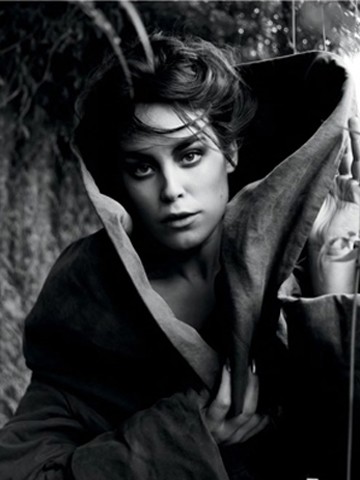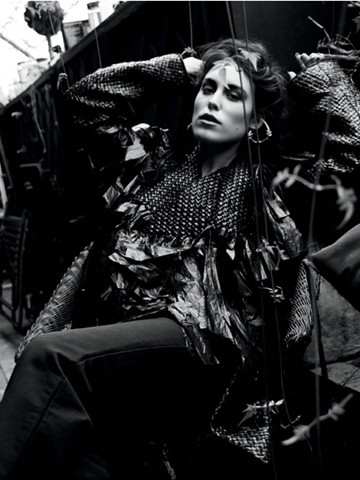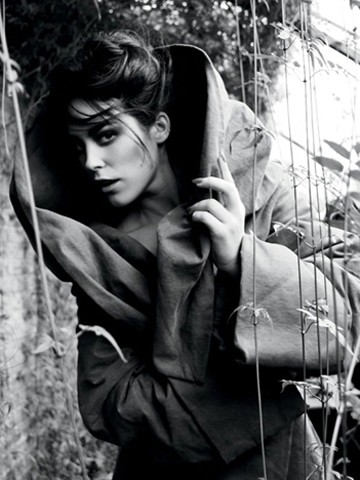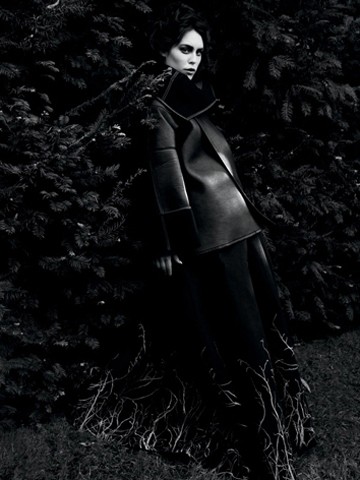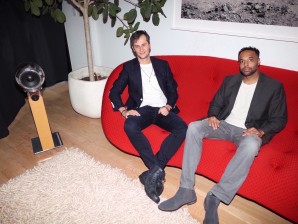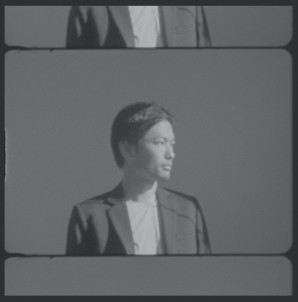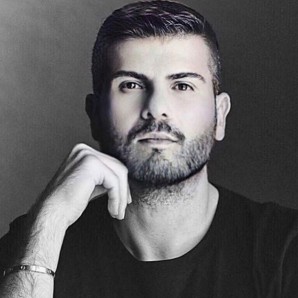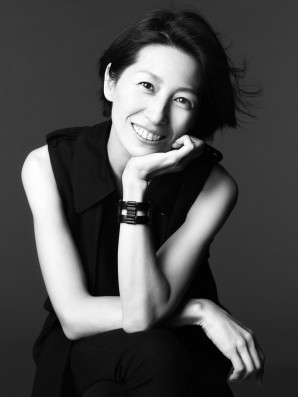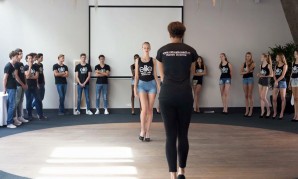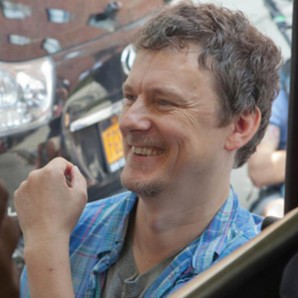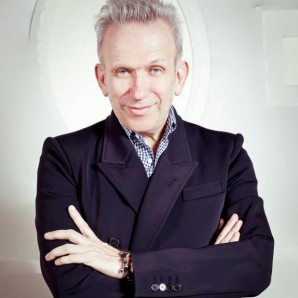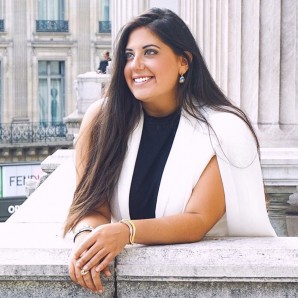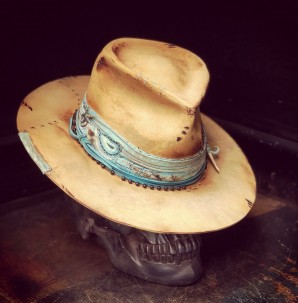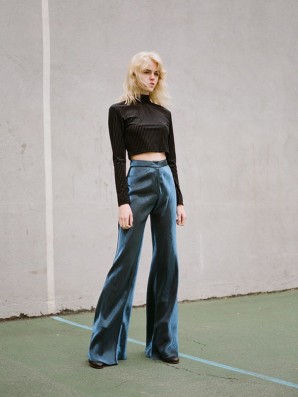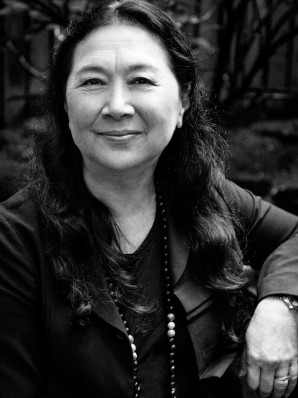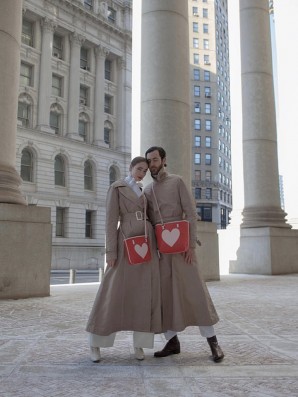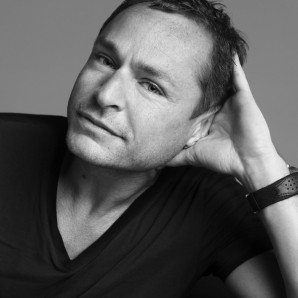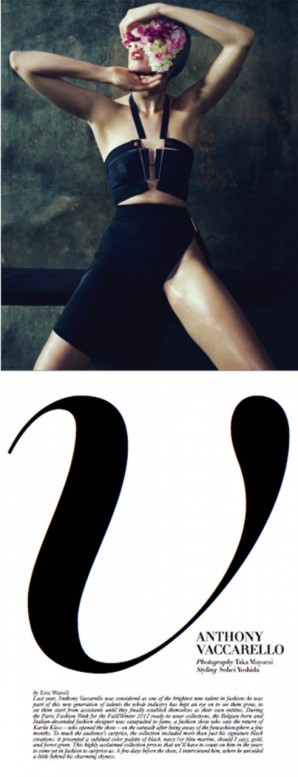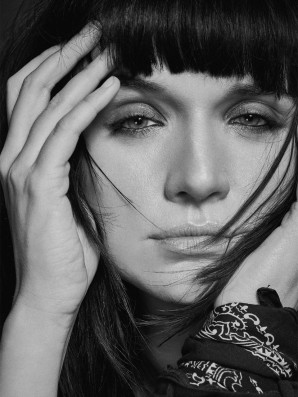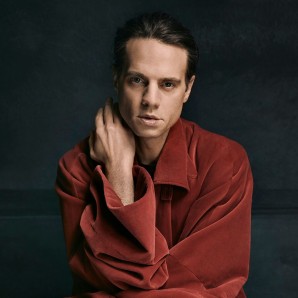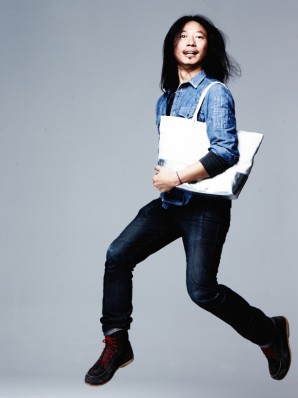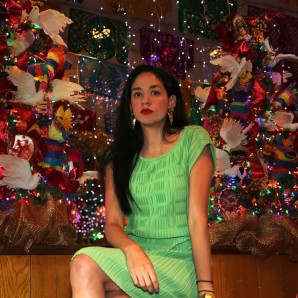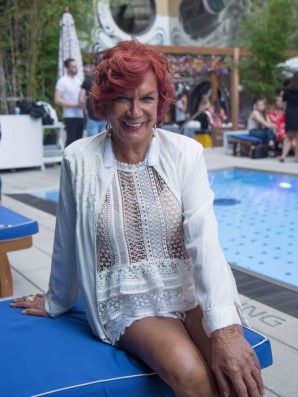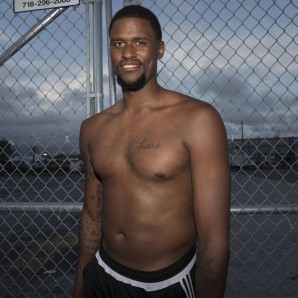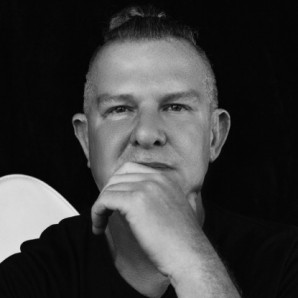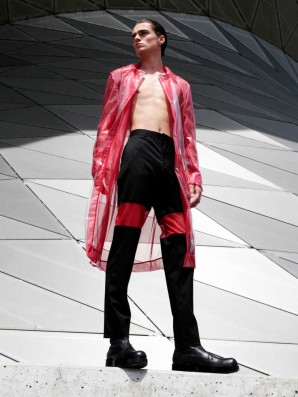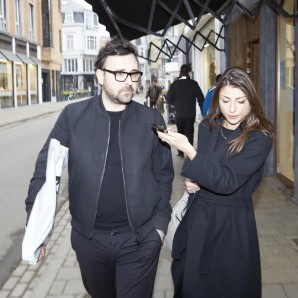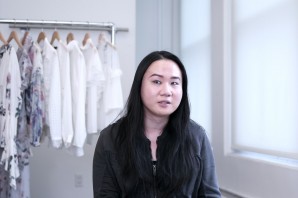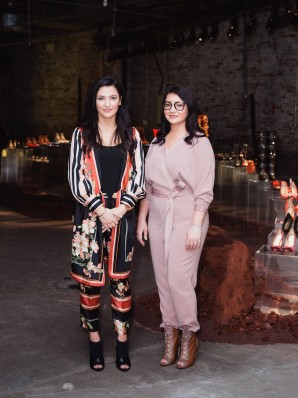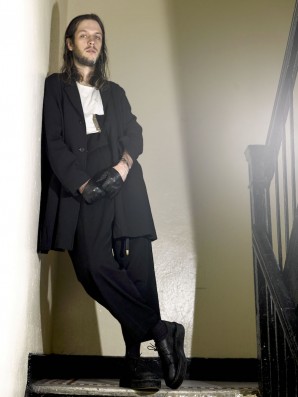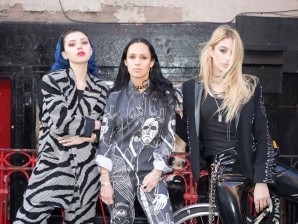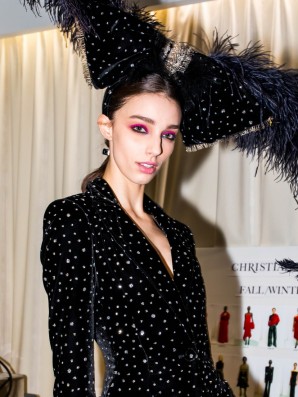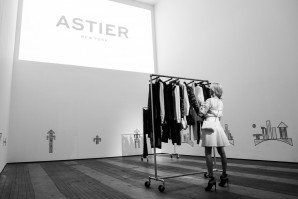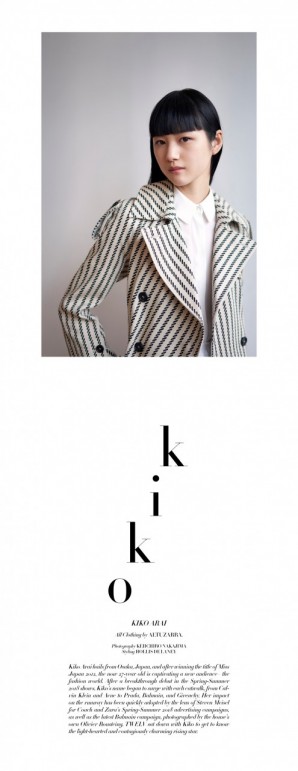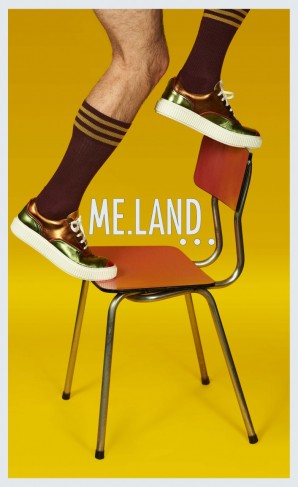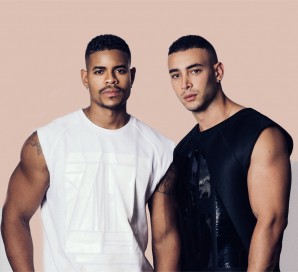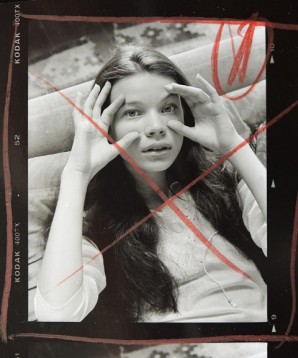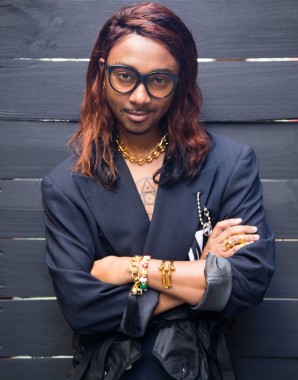TWELV sits down with founders of Parlor Social Club Jan Cieslikiewicz and Frederick Ghartey to give a glimpse into the story of co-founders living in New York City.
GARETH PUGH: ORGANIZED CHAOS
Gareth Pugh is a study in contrasts; balancing the demands of what is created and what is worn; what is in a designer’s control and what is in the hands of the wearer; what must be planned and what must be left to chaos. Recently Pugh’s work conveys a comfort level in what he does and how it exists in the larger context of fashion. No longer focused on pure shock value, Pugh recently spoke with TWELV about his creative process and the fashion industry, as well as the increasing sense of maturity exhibited in his creations. His good friend Tallulah Harlech, daughter of Chanel muse Lady Amanda Harlech and actress in Ralph Fiennes' new film "The Invisible Woman", showcases Pugh's newest designs in a lush garden in London.
What is your process in creating a collection? Do you need to contemplate an idea for a long time, do you create from instinct and a generative process, or is it a bit of both?
It’s actually a bit of both. I do tend to think about things a great deal, but there are moments- happy accidents lets say- that can trigger a whole new direction for an entire collection. It’s very dangerous, of course, to rely on these moments, so I always like to create a solid basis, a sort of abstract narrative that could be as basic as a sense, or a feeling, to work from. It is very rarely something tangible, and usually very difficult for me to communicate this narrative to anyone else, but things begin to solidify and crystallize as we work on the various elements of the show. It is very satisfying for me when all the elements come together and form a complete image.
Your work seems to be centered on a type of creative narrative, or a type of story that is communicating an abstracted idea. What role do you see that type of fashion playing in the wider scope of the fashion industry?
Everyone can relate to a story, no matter how abstract. Take away the story, and what you are left with is simply an aesthetic. An aesthetic is very easy to disengage from, while a narrative has the potential to become more ingrained, and feels like its part of something real, something physical, which ultimately is what makes fashion desirable. I would like to think that people want to be part of something that transcends the surface, and experience something that feels steeped in a certain ideology.
Where do you see fashion going in the future? Do you see artistic or conceptual approaches to fashion becoming more important?
It’s easy to feel a little despondent about fashion at the moment. I do think that there needs to be some sort of seismic shift – a total re-evaluation of what we value and look towards.
What are your views on the turnover of fashion? As an art-related designer do you wish that you had a seasonless time limit to develop ideas, or do you feel that the rigid pace of seasons keeps you motivated and focused?
Having such rigid deadlines is something that I am used to, and also think is very necessary. If I was afforded all the time in the world to work on something before letting it go, it would be impossible to actually do so. Nothing is ever perfect, and though this is a difficult lesson to learn, you very quickly realize that this sense of dissatisfaction is what spurs you on to do the next thing; a constant and never ending search for perfection. I like being able to build something up, then completely destroy it and start fresh. There is definitely something quite sadistic in this approach, yet being able to develop a visual language, and discover new ways of doing things along the way makes the process easier as time goes on.
How do you wish your customer to interact with the clothing that you create for her beyond the corporeal? What are you hoping that she feels when wearing your clothing?
Once you set something free, you lose control. What I wish for in this respect is immaterial.
What is the significance of gray, black, blue, and white in your work?
It’s simply about minimizing visual noise, and an attempt to offer an idea in its most basic form.
Many of your clothes are architectural and mathematical in structure. What is the relationship between the body and the angularity of your work?
It is more to do with a desire for control. Out of a sometimes very chaotic process comes this definite yearn for clarity. This is something that undoubtedly permeates the clothes.
You are able to deftly wrap the body in volumes of fabric without overwhelming the wearer. Can you explain the symbolism that you see behind that?
I don't like to overthink each and every aspect of what I do, that’s very important, it allows me a certain freedom to do something because it feels right, rather than constantly thinking about what it means to do it. I would argue that that’s not necessarily part of my role, as self-awareness at a certain level is an important asset, but taken too far can be very dangerous.
What designer’s work most often attracts your attention or has an influence on your own work? Do you feel it is more or less relevant to look at historical dress versus contemporary work?
That’s a difficult question to answer. I would describe my taste as that of a schizophrenic magpie.
Do you think the fashion press generally understands your work, or do you think that they miss the mark?
There are definitely certain people who get it, and who take the time to actually understand it rather than simply look, though that’s not really something that bothers me. If I'm pleasing everyone, I’m definitely doing something very wrong indeed.
You work with a lot of the same people each season in support of your fashion show presentations. Is it more collaborative in nature, or are most of the choices a part of your vision that they carry out?
I usually have very definite ideas about how I want things to be. I work with people that I like – that’s very important to me – people that I feel comfortable with and people who are able to execute these ideas.
Would you say that you have a muse? What does the term muse mean to you?
My idea of a muse is a little idealistic, and that of someone who totally and without question inhabits the fantasy. My notion of a muse goes far beyond a person who simply wears the clothes and/or has a particular attitude that fits a certain designer or collection. A muse for me is someone who sacrifices themselves, who throws themselves on the fire like a phoenix.
By: Noel Palomo-Lovinski
Photography: Jessie Craig
Hair: Isabella Boettcher @ Terri Manduca. Makeup: Natsumi Minarita @ Untitled Artists. London using MAC. Manicurist: Ami Streets @LMC Worldwide using The New Black.
*This story was featured in TWELV's Fall/Winter 2013 Issue
related posts
Keiichiro Nakajima interview
Keiichiro Nakajima is a photographer and director based in Japan, represented by a management and production company called Signo, Inc, which is one of the largest and leading artist management...
SHIN FUJIYAMA Founder of Students Helping Honduras INTERVIEW
Japanese-American philanthropist Shin Fujiyama co-founded Students Helping Honduras with his sister Cosmo Fujiyama.
NEW TYPE #36: Mônot - ELI MIZRAHI INTERVIEW
Beginning with his childhood in Lebanon, Eli Mizrahi garnished inspiration from across the globe to debut his evening wear brand, Mônot, last fall.
RMK CREATIVE DIRECTOR: KAORI INTERVIEW
KAORI is a renowned make-up artist and the creative director of RMK beauty, a flourishing Japanese makeup and skincare brand that is now sold worldwide.
MICHEL GONDRY INTERVIEW
“MAYBE WE CAN BE IMMERSED IN MOVIES BECAUSE WE’RE USED TO DREAMING.”
JEAN PAUL GAULTIER EXCLUSIVE INTERVIEW
It has become almost useless and banal to introduce Jean-Paul Gaultier.The mere mention of his name alone elicits a constellation of images that have become part of our mind and imagination since...
NEW TYPE #35: DARA SENDERS INTERVIEW
Dara Senders, the designer behind the eponymously titled, all size inclusive brand that launched in 2018, has always been obsessed with fashion.
NEW TYPE #35: NTTE HATS
From a small city near Milan to Downtown New York, Paolo, Designer and creater of NTTE Hatsdiscovered his passion for hats and anything vintage at a young age.
NEW TYPE #34 : BEAU WATSON
1. As a new designer, how do you hope to distinguish yourself among other designers?
NIAN FISH INTERVIEW
Nian Fish, creative director of KCD, has been, for decades, a pivotal figure in the fashion world, assembling and producing fashion shows that have become cultural benchmarks unto themselves, such...
CESAR LOVE ALEXANDRE INTERVIEW
Cesar Love Alexadre is a duo of visual artists formed by Isabelle Chaput and Nelson Tiberghien.They met at the Gobelins school of Photography in Paris and now based in New York where they work on...
TOM PECHEUX INTERVIEW
TWELV got a special interview from Tom Pecheux. Read as we host interviews and explore the lives of artists who shape the final product - directors, fashion designers, stylists, ...
ANTHONY VACCARELLO INTERVIEW
Anthony Vaccarello was considered as one of the brightest new talent in fashion: he was part of this new generation of talents the whole industry has kept an eye on to see them grow, to see them...
Why is Everyone in Hollywood Buzzing About Actress Malgosia Garnys?
Have you ever felt like you were beautiful and powerful and the universe was conspiring in your best interest, and your opportunities were endless because you’ve lost people you loved...
INTERVIEW: Bigwig Broadway Producer, Jordan Roth and Acclaimed Choreographer, Michelle Dorrance
R.I.P Chek Wu
We at TWELV are deeply saddened to announce the passing of talented photographer, boundless free-spirit, and our friend, Chek Wu.
GatherNYC: Everything We Love About Church With No Weird Stuff
GatherNYC is Everything We Love About Sunday Service With None of the Weird Stuff
NEW TYPE #33: Catherine Casias Inteview
If fashion is an expression of experiences, Catherine Casias has a lot of area to cover. She has excelled as an Olympic volleyball player, a philosophy major, and a fine artist....
Party Czar Carmen D’Alessio, Empress of the Sun and the Queen of the Night
You may not know Carmen D’Alessio by name.
IKEMEN #39: JORDAN HENRIQUEZ
IKEMEN (ē´k´mɛn): Japanese Slang
"REALLY, REALLY, RIDICULOUSLY GOOD LOOKING PEOPLE"
IKEMEN #38: WARREN KAY
IKEMEN (ē´k´mɛn): Japanese Slang
"REALLY, REALLY, RIDICULOUSLY GOOD LOOKING PEOPLE"
NEW TYPE #32: ALEXANDER ROYS INTERVIEW
"Introducing an innovative Men’s designer to inspire you with the visions of future and the rise of technology."
Branding in the Worlds of Art and Commerce According to Silvia Mella
Branding is everything. For an entrepreneur, it is the difference between viability and bankruptcy. On social media, we are all our own brands.
Interview: Jackie Yang, Creative Director of Chelsea and Walker
TWELV sat down with Jackie Yang, Creative Director of Chelsea and Walker, in the brand’s New York City...
New Type #31: Angela Mitchell – Krystal and Marilyn Lavoie Interview
We are living in the age of fast fashion, and even Europe’s most storied luxury brands have been moving their factories to Asia to reduce costs.
Ikemen #37: Dominik Halas
IKEMEN (ē´k´mɛn): Japanese Slang
"REALLY, REALLY, RIDICULOUSLY GOOD LOOKING PEOPLE"
New Type #30: Carolina Sarria & Bianca Allen Interview
Both Carolina Sarria and Bianca Allen knew they wanted to become fashion designers from a young age.
Interview & Backstage: Christian Siriano Celebrates 10 Years in Fashion
After the successful launch of his book Dresses to Dream About, a decade-anniversary celebration on the runway, and a whirlwind of striking celebrity looks on the red carpet of...
New Type #29: Jackie Astier Interview
Astier places its identity within the advanced adaptation skills of the modern New York woman.
INTERVIEW: Meet Kiko Arai, Miss Japan-turned Face of Balmain and Zara
Kiko Arai hails from Osaka, Japan, and after winning the title of Miss Japan 2012, the now 27-year old is captivating a new audience– the fashion world.
Interview: Parisian Designer Frédéric Robert's Debut Shoe Collection "ME.LAND"
A vibrant brand of Italian-made shoes for men is emerging this year as one-to-watch.
New Type #28: the Design Duo Behind Maxime Hernandez Interview
The streetwear phenomenon in the fashion establishment is not slowing down anytime soon.
MICHEL NAFZIGER INTERVIEW
With a wealth of experience shooting some for some of fashion's most renowned clients (Yves Saint Laurent, Guy Laroche), ...
IKEMEN #36: Jérôme LaMaar
IKEMEN (ē´k´mɛn): Japanese Slang
"REALLY, REALLY, RIDICULOUSLY GOOD LOOKING PEOPLE"

